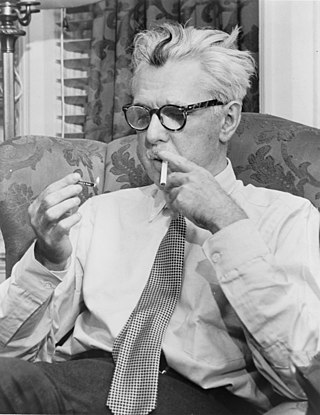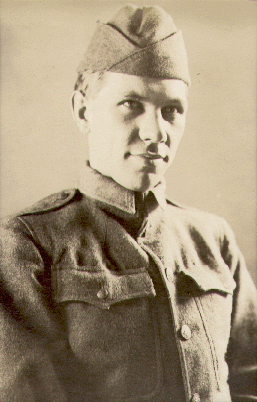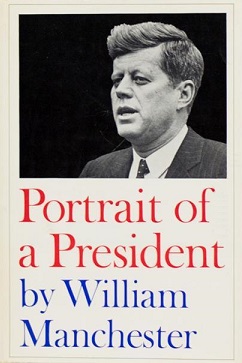Early life, education and career
John McNulty was born in Lawrence, Massachusetts, in 1895. John's father died during John's early childhood. He was raised by his mother, who operated a small store to support her family. [4] John McNulty served to the rank of noncommissioned officer in the U.S. infantry in France during World War I. McNulty fought in several of the war's major battles. It was sadly at the 1918 Battle of Tardenois, also known as the Second Battle of the Marne, the decisive Allied victory that lead to the Central Powers’ capitulation and the end of World War I or the war to end all wars within 100 days thereof, that the thereto unscathed John McNulty finally suffered a massive wound to his leg that left him with a severe limp for the rest of his life. No other noncommissioned officer in John’s company survived the war. [5]
After recouping from his injury for more than a year, John attended the Columbia School of Journalism while working for the Associated Press. After graduating from Columbia University, John went to work as a reporter for the New York Post newspaper. He subsequently worked as a reporter in chronological order for the Columbus, Ohio Ohio State Journal newspaper, the New York Daily Mirror newspaper, the New York Daily News newspaper, and, then, as a staff writer at Time (magazine), before in 1937 joining his close friend James Thurber at The New Yorker magazine, where McNulty remained until his death from a heart attack in 1956. [6]
Literary works and close friendship with Thurber
Many of John McNulty's stories deal with New York saloon life and its characters. McNulty was a lifelong friend, associate, and drinking companion of writer and humorist James Thurber, who McNulty had early mentored while in Ohio. [10] McNulty wrote at The New Yorker with Thurber, Joseph Mitchell, S. J. Perelman, E. B. White and others. They met at Costello's saloon on Third Avenue in New York City as members of the "square table" (in contrast with the literary wits who met at the Algonquin Round Table). Thurber eulogized McNulty in the New Yorker and wrote a long and extraordinarily affectionate foreword to (The World of John McNulty) the earliest posthumous collection of his friend's stories. [11] [12] According to Thurber, The New Yorker published more than sixty pieces by McNulty. [13]
McNulty's works have been used in graduate literature courses at Columbia, [14] Duke and University of Pittsburgh. [15] McNulty's stories are collected in The World of John McNulty (1957) and This Place on Third Avenue (2001). "The World of John McNulty" (TWJM) collects 55 pieces; 13 of 17 from McNulty's book "3rd Avenue, New York" (TANY); 11 of 12 from his book "A Man Gets Around"(AMGA); 12 of 25 from his book "My Son Johnny" (MSJ); and 19 previously uncollected pieces. "This Place on Third Avenue" collects 28 pieces (7 of which do not appear in TWJM); 15 from TANY; 2 from AMGA; none from MSJ; 7 collected in TWJM; 2 previously uncollected; and 2 previously unpublished.
James Thurber, McNulty's close friend, wrote that “Nothing, however, commonplace, that he touched remained commonplace but, was magnified and enlivened by his intense and endless fascination with the stranger in the street, the drinker in the bar, and the bartender behind it, the horseplayer, the cab driver, the guy at the ballgame, the fellow across the room, the patient in the next hospital bed.” [16]

James Grover Thurber was an American cartoonist, writer, humorist, journalist and playwright. He was best known for his cartoons and short stories, published mainly in The New Yorker and collected in his numerous books.

The New Yorker is an American magazine featuring journalism, commentary, criticism, essays, fiction, satire, cartoons, and poetry. Founded as a weekly in 1925, the magazine is published 47 times annually, with five of these issues covering two-week spans. Although its reviews and events listings often focus on the cultural life of New York City, The New Yorker also produces long-form journalism and shorter articles and commentary on a variety of topics, has a wide audience outside New York, and is read internationally.

John Angus McPhee is an American writer. He is considered one of the pioneers of creative nonfiction. He is a four-time finalist for the Pulitzer Prize in the category General Nonfiction, and he won that award on the fourth occasion in 1999 for Annals of the Former World. In 2008, he received the George Polk Career Award for his "indelible mark on American journalism during his nearly half-century career". Since 1974, McPhee has been the Ferris Professor of Journalism at Princeton University.

Thomas Kennerly Wolfe Jr. was an American author and journalist widely known for his association with New Journalism, a style of news writing and journalism developed in the 1960s and 1970s that incorporated literary techniques. Much of Wolfe's work was satirical and centred on the counterculture of the 1960s and issues related to class, social status, and the lifestyles of the economic and intellectual elites of New York City.

Creative nonfiction is a genre of writing that uses literary styles and techniques to create factually accurate narratives. Creative nonfiction contrasts with other nonfiction, such as academic or technical writing or journalism, which are also rooted in accurate fact though not written to entertain based on prose style. Many writers view creative nonfiction as overlapping with the essay.
New Journalism is a style of news writing and journalism, developed in the 1960s and 1970s, that uses literary techniques unconventional at the time. It is characterized by a subjective perspective, a literary style reminiscent of long-form non-fiction. Using extensive imagery, reporters interpolate subjective language within facts whilst immersing themselves in the stories as they reported and wrote them. In traditional journalism, the journalist is "invisible"; facts are meant to be reported objectively.
Jay Anthony Lukas was an American journalist and author, best known for his 1985 book Common Ground: A Turbulent Decade in the Lives of Three American Families. Common Ground is a classic study of race relations, class conflict, and school busing in Boston, Massachusetts, as seen through the eyes of three families: one upper-middle-class white, one working-class white, and one working-class African-American.

Harold Wallace Ross was an American journalist who co-founded The New Yorker magazine in 1925 with his wife Jane Grant, and was its editor-in-chief until his death.
Burton Jesse Hendrick, born in New Haven, Connecticut, was an American author. While attending Yale University, Hendrick was editor of both The Yale Courant and The Yale Literary Magazine. He received his BA in 1895 and his master's in 1897 from Yale. After completing his degree work, Hendrick became editor of the New Haven Morning News. In 1905, after writing for The New York Evening Post and The New York Sun, Hendrick left newspapers and became a "muckraker" writing for McClure's Magazine. His "The Story of Life-Insurance" exposé appeared in McClure's in 1906. Following his career at McClure's, Hendrick went to work in 1913 at Walter Hines Page's World's Work magazine as an associate editor. In 1919, Hendrick began writing biographies, when he was the ghostwriter of Ambassador Morgenthau's Story for Henry Morgenthau, Sr.
Faith McNulty was an American non-fiction author, probably best known for her 1980 literary journalism genre book The Burning Bed. She is also known for her authorship of wildlife pieces and books, including children's books.
Robert Myron Coates was an American novelist, short story writer and art critic. He published five novels; one classic historical work, The Outlaw Years (1930) which deals with the history of the land pirates of the Natchez Trace; a book of memoirs, The View from Here (1960), and two travel books, Beyond the Alps (1962) and South of Rome (1965). During his unusually varied career, Coates explored many different genres and styles of writing and produced three highly remarkable experimental novels, The Eater of Darkness (1926), Yesterday’s Burdens (1933) and The Bitter Season (1946). Highly original and experimental, these novels draw upon expressionism, Dadaism and surrealism. His last two novels—Wisteria Cottage (1948) and The Farther Shore (1955)—are examples of crime fiction. Simultaneously to working as a novelist, Coates maintained a life-long career at the New Yorker, whose staff he joined in 1927. The magazine printed more than a hundred of his short stories many of which were collected in three anthologies; All the Year Round (1943), The Hour after Westerly (1957) and The Man Just ahead of You (1964). Also, from 1937 to 1967, Coates was the New Yorker’s art critic and coined the term “abstract expressionism” in 1946 in reference to the works of Hans Hofmann, Arshile Gorky, Jackson Pollock and Willem de Kooning and others. He was elected to the National Institute of Arts and Letters in 1958. Coates was married to sculptor Elsa Kirpal from 1927 to 1946. Their first and only child, Anthony Robertson Coates, was born on March 4, 1934. In 1946, they divorced and Coates married short story writer Astrid Meighan-Peters. He died of cancer of the throat in New York City on February 8, 1973.

Thurber House is a literary center for readers and writers located in Columbus, Ohio, in the historic former home of author, humorist, and New Yorker cartoonist James Thurber. Thurber House is dedicated to promoting the literary arts by presenting quality literary programming; increasing the awareness of literature as a significant art form; promoting excellence in writing; providing support for literary artists; and commemorating Thurber's literary and artistic achievements. The house is individually listed on the National Register of Historic Places, and also as part of the Jefferson Avenue Historic District.

Portrait of a President (1962) is William Manchester's description of U.S. President John F. Kennedy. It was based on Manchester's 1962 Holiday magazine article.

Lucinda Laura Franks was an American journalist, novelist, and memoirist. Franks won a Pulitzer Prize in 1971 for her reporting on the life of Diana Oughton, a member of Weather Underground. With that award she became the first woman to win a Pulitzer for National Reporting, and the youngest person ever to win any Pulitzer. She published four books, including two memoirs, and worked as a staff writer at The New York Times and The New Yorker.
Sara Davidson is an American journalist, novelist, and screenwriter. She is the author of the best-selling Loose Change. It was adapted as a television mini-series. In addition, she has written other series and served as producer.
Courtlandt Dixon Barnes Bryan, better known as C. D. B. Bryan, was an American author and journalist.
Carleton Beals was an American journalist, writer, historian, and political activist with a special interest in Latin America. A major journalistic coup for him was his interview with the Nicaraguan rebel Augusto Sandino in February 1928. In the 1920s he was part of the cosmopolitan group of intellectuals, artists, and journalists in Mexico City. He remained an active, prolific, and politically engaged leftist journalist and is the subject of a scholarly biography.

Holiday was an American travel magazine published from 1946 to 1977, whose circulation grew to more than one million subscribers at its height. The magazine employed writers such as Truman Capote, Joan Didion, Lawrence Durell, James Michener, and E. B. White.

Thomas Vinciguerra was an American journalist, editor, and author. A founding editor of The Week magazine, he published about popular culture, nostalgia and other subjects in The New York Times, The Wall Street Journal, The New Yorker and GQ.
Jane Ellen Amsterdam is a former American magazine and newspaper editor. After successive magazine editorships during the 1970s, she joined The Washington Post as section editor. She later became founding editor of Manhattan, inc. magazine, and was widely credited with making it into a dynamic, National Magazine Award-winning magazine. She later joined the New York Post, becoming the first female editor of a major New York City newspaper. At the New York Post, she worked to increase the paper's credibility and journalism standards. By the time she left the Post in 1989, she was one of only six women in the country editing a newspaper with a circulation of over 100,000.










